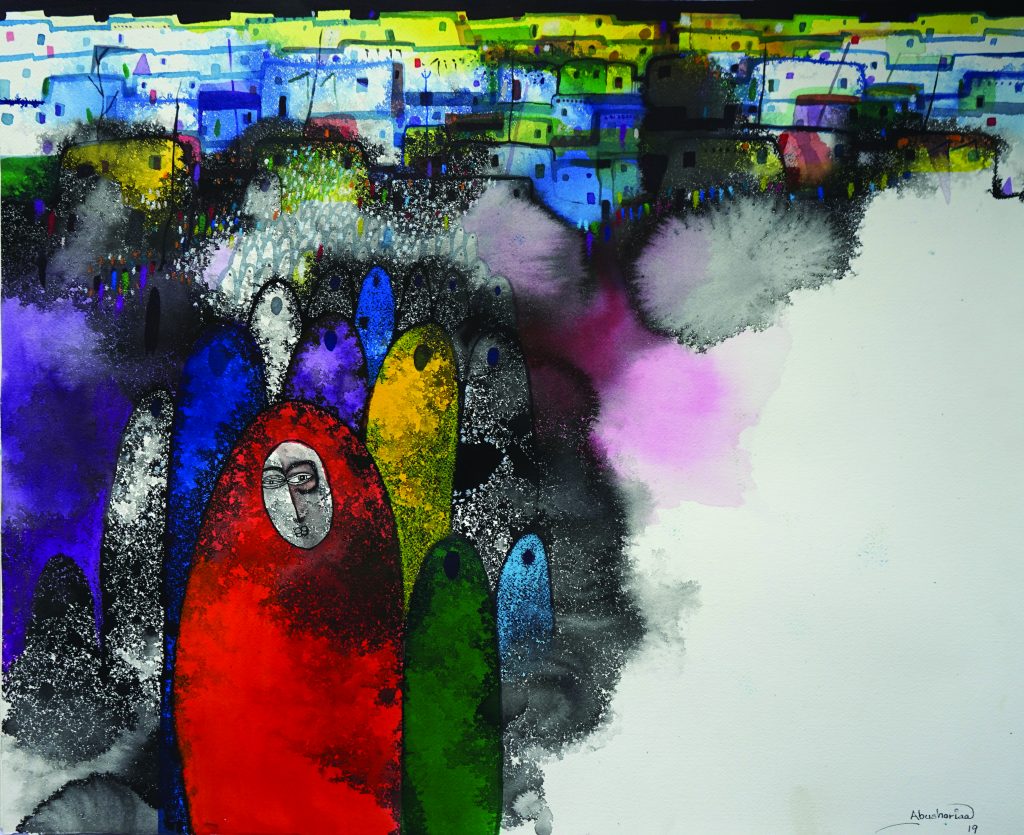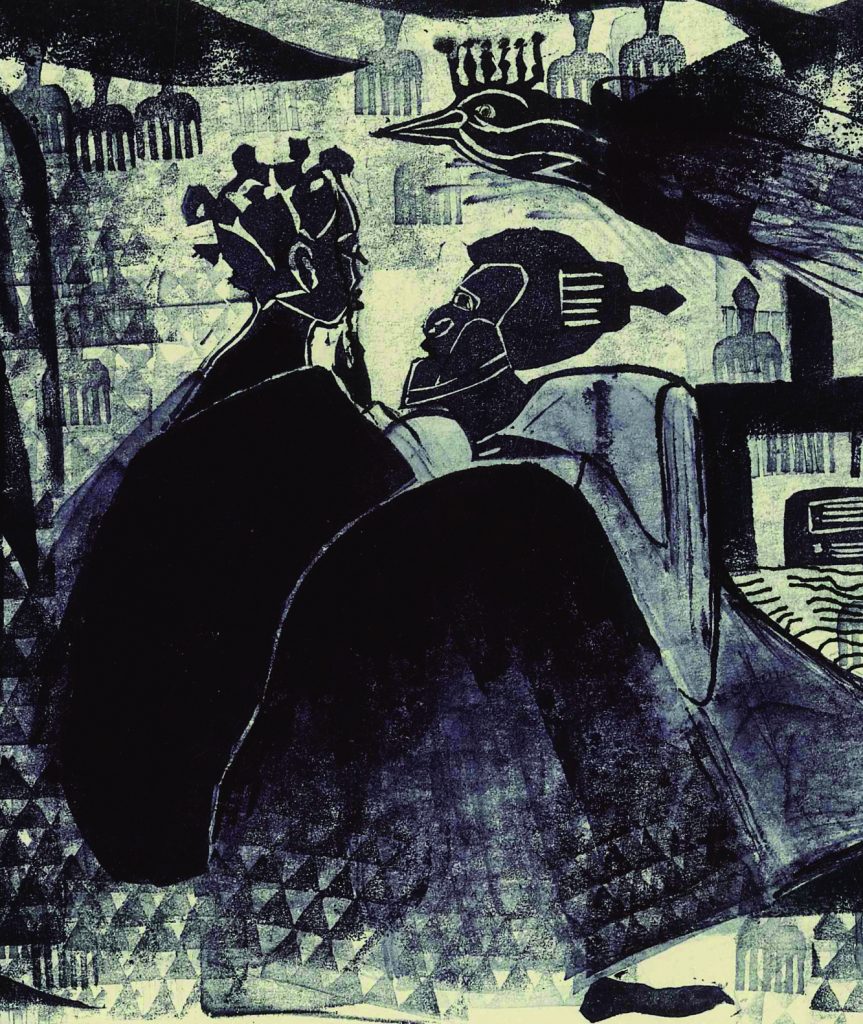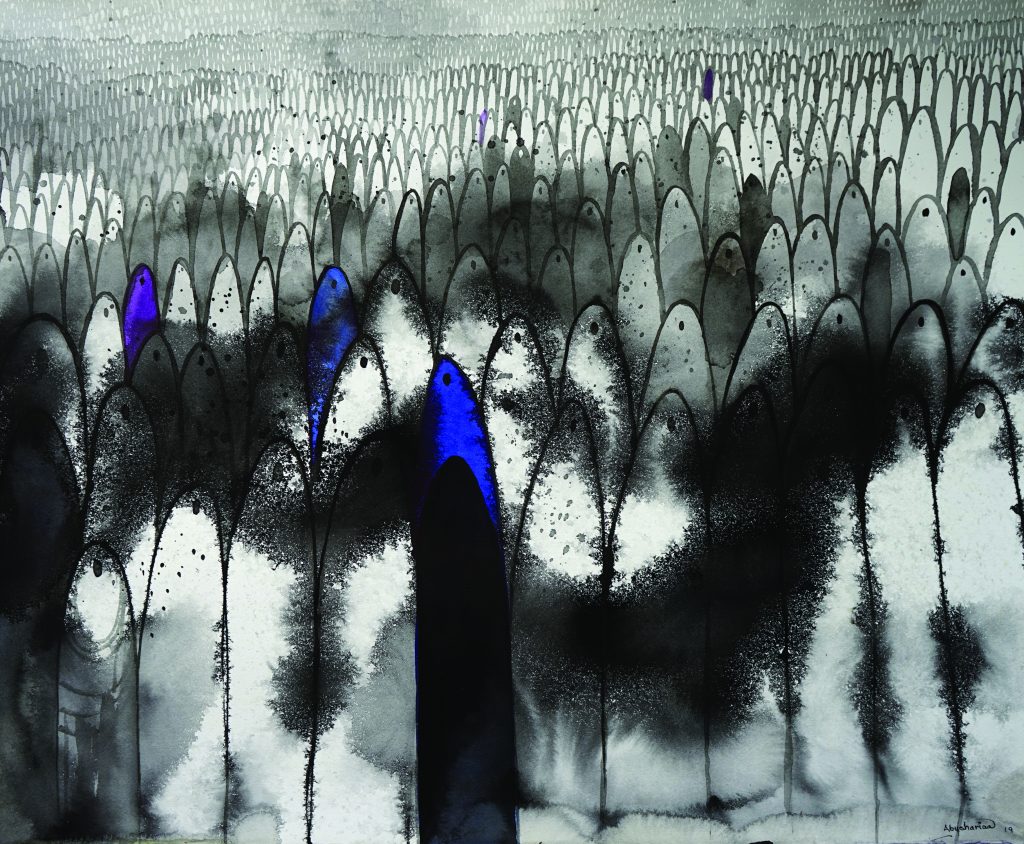Identity in Sudanese Art
And ‘the Many Mothers of Sudan’s Revolution’

Photo: Courtesy of Afriart Gallery
Three decades under the dictatorship of Omar al-Bashir, which saw no economic growth, led to spontaneous protests and, eventually, to a large and peaceful uprising resulting in al-Bashir’s removal from power in April 2019. The transition was riotous and saw hundreds killed, injured or raped. Artists, who were suppressed under Bashir’s rule leaving them jailed, banned or exiled, were now holding power and at the heart of this uprising – with music concerts, painting of murals throughout Khartoum, and more, calling for a much needed change and paying homage to the victims of the June 3rd crackdown.
Through visual art in activism, today’s generation of artists are upholding a legacy of standing up to military regimes, similarly to the 1964 and 1985 uprisings. One such artist is Alaa Satir, who became the face of the resistance by empowering women and highlighting their role in the revolution, especially since women have long been part of the country’s struggle for peace and justice. Gallery manager and curator at Afriart Gallery in Uganda, Michelle Mlati, told me that the “emergence of activism is largely present in iconic female figures, such as the Kandake (the Nubian Queen) of Meroe, who employed a military strategy to prevent Alexander the Great from conquering Nubian lands in 332 B.C.”
For artists like Alaa Satir, Galal Yousif, Assil Diab and many others, taking to the street and painting was a way to break away from the fear, document the change and remind whoever governs next what they are fighting for. Many do not believe the revolution should end with just the instalment of a civilian government, but measures like art being integrated into the basic education system, for example.
It was only in 1964 that the Khartoum School became a university with a BA degree, with teachers who had left Sudan to study art in London – either at the Slade School of Fine Art, at Central St Martins or at the Royal College of Art. These included Ibrahim El-Salahi, Kamala Ishaq, Amir Nour, Magdoub Rabbah, Mohammed Abdallah, El Nigoumi, Ahmad Shibrain and Taj Ahmad. Together they set up training which would have artists leaving the school with their own expressions of African and Islamic identity. But in the 1970s, another round of artists received overseas scholarships following their first degrees at Khartoum university. The group, which includes Abdallah Bashir (Bola), Hassan Musa (residing in France), Rashid Diab and Mohammed Omer Bushara, came out strong in the contemporary African art scene. Bola and Musa accused the early generation of Khartoum school artists of elitism and ethnocentrism, instead of being more proactive in response to the aesthetic demands of modernity and contemporaneity.
It was only El-Salahi, regarded as a ‘visionary modernist’, who responded to the critiques through correspondence with Musa, as well as engaging in dialogue with younger Sudanese artists on issues related to identity, art and criticism in Sudan. It is no surprise that he is recognised as one of the most important artists to emerge out of Sudan, even successfully showing a retrospective of his work at Tate Modern in 2013. Hussein Shariffe, who just like El-Salahi studied at the Slade, and Salah Elmur, are another two artists who received international acclaim. But many are the artists who today are reaching different markets worldwide through international African art fairs and African art galleries like the Afriart gallery, the Circle Art Gallery and many others. These include artists: Abdallah Mohammed ElTayeb, Abdel Basit El Khatim, Abushariaa Ahmed, Amel Bashir, Amna Elhassan, Ashraf Monim, Bakri Bilal, Elamin Osman, Elhassan Elmountasir, Eltayeb Dawelbait, Fathi Hassan, Hazim Al Hussein, Hussein Halfawi, Hussein Salim, Issam Hafiez, Khalid Abdel Rahman, Miska Mohmmed, Mohammed Abdella Otaybi. Mohammed Morda, Mohammed Omar Khalil, Mutaz Elemam and Laila Mukhtar Adam. Afriart Gallery will be hosting a show titled Sudanese Art: Before, During and After the 2019 Revolution, from the 5th to the 18th November 2020, which is part of FNB Art Joburg online art fair, broadcasting from Johannesburg, South Africa. The show will be exhibiting the artworks of the three Sudanese artists – Abushariaa Ahmed, Amna Elhassan and Khalid Abdel Rahman. In the series Sudan 06-19, which was made during the revolution, Abushariaa focuses on the role of women in the Sudan revolution, which reached its peak around June 2019. Women who led powerful protest chants fuelling the revolution that ousted President Omar al-Bashir, like Alaa Salah, came to symbolise the fundamental role women played on the front lines of pro-democracy protests, outnumbering the men present. His ink drawings refer to them as ‘the many mothers of Sudan’s Revolution’, a strong collective effort of Sudanese women that date back to the iconic female figure of activism, the Nubian Queen Kandake of Meroe.

Photo: Courtesy of Afriart Gallery

Photo: Courtesy of Afriart Gallery








